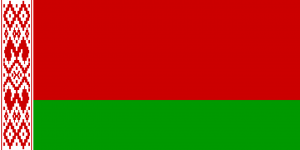Language/Belarusian/Grammar/Comparatives
As a Belarusian language teacher for two decades, I have noticed that one of the trickiest aspects of learning adjectives is understanding how to use comparative forms. In this lesson, you will learn how to use comparative adjectives in Belarusian. By the end of this lesson, you should be able to construct comparative statements using adjectives.
What are Comparative Adjectives?
Comparative adjectives are used to compare two things in terms of a particular quality. In Belarusian, comparative adjectives are formed by adding specific endings to the root of the adjective depending on their declension pattern. The endings are different for adjectives depending on gender and case endings.
The Belarusian language has three degrees of comparison:
- Comparative (балей, дзейней, хутчэй etc.);
- Superlative (найбалей, найдзейней, найхутчэй etc.)
- Аbsolute (вельмі, столькі ж … як, настолькі … як etc.)
How to Form Comparative Adjectives in Belarusian
There are several ways to form the comparative degree in Belarusian depending on the endings of the adjective. Here are some examples:
| Belarusian | Pronunciation | English |
|---|---|---|
| высокі | vy-só-kyi | tall |
| вышэйшы | vyshejshi | taller |
| самы вышэйшы | samy vyshejshi | tallest |
In this example, we see the comparative form of высокі `tall` being transformed into вышэйшы `taller` by adding the suffix `-ейшы`. It is necessary to distinguish whether the adjective is masculine or feminine, singular, or plural. Some endings require a change in the stem while others do not.
Below are some examples of how to form the comparative degree for different kinds of adjectives:
One-Syllable Adjectives
One-syllable adjectives are usually transformed into comparative form by adding `-ейшы` to the stem:
| Belarusian | Pronunciation | English |
|---|---|---|
| белы | bie-ly | white |
| белейшы | bieleyshy | whiter |
| самы белейшы | samy bieleyshy | whitest |
Adjectives Ending in -ай or -ий
Adjectives ending in `-ай` or `-ий` are changed into comparative form by removing the final letter before adding `-ейшы`:
| Belarusian | Pronunciation | English |
|---|---|---|
| светлы | svyet-ly | light |
| светлейшы | svyetleyshy | lighter |
| самы светлейшы | samy svyetleyshy | lightest |
Adjectives Ending in -ы
Adjectives ending in `-ы` are usually transformed into comparative form by changing the ending to `-ейшы`:
| Belarusian | Pronunciation | English |
|---|---|---|
| малы | mó-ly | small |
| малейшы | móleyshy | smaller |
| самы малейшый | samy móleyshy | smallest |
Exceptions
There are some adjectives that have different comparative forms compared to the usual pattern we see in Belarusian adjectives. Here are a few examples:
| Belarusian | Comparative | English |
|---|---|---|
| добры | лепшы | good > better |
| зручны | зручнейшы | convenient > more convenient |
Using Comparative Adjectives in Sentences
Let's look at some examples of comparative adjectives being used in sentences:
- Мая сястра вышэйшая за ўсяго класу. (My sister is the tallest in the entire class.)
- Мой тэлефон менейшы за твой. (My phone is smaller than yours.)
- Беларуская музыка лепшая за ўсе. (Belarusian music is the best of all.)
As you can see in the examples above, comparative adjectives are used to compare two things. They are often used in the nominative or accusative case, depending on the sentence's structure.
Practice with Exercises
Now that you have learned how to form comparative adjectives in Belarusian and use them in sentences, it's time to practice to solidify your knowledge better. Below are some exercises to strengthen your understanding:
- Construct a comparative sentence about your best friend.
- Write a comparative sentence about your country's capital and another one's capital.
- Practice with the Belarusian comparative adjectives by making a list of different nouns you can use for comparative sentences.
Remember to pay attention to the gender and number of the adjectives to construct a grammatically correct sentence.
Conclusion
Congratulations! You have completed the lesson on comparative adjectives. In this lesson, we learned what comparative adjectives are, different ways to form them, use them in sentences, and exercises to practice on. Keep practicing to develop a strong knowledge of comparative adjectives in Belarusian. In the next lesson, we'll be discussing superlatives, so don't forget to check that out. Happy Learning!

